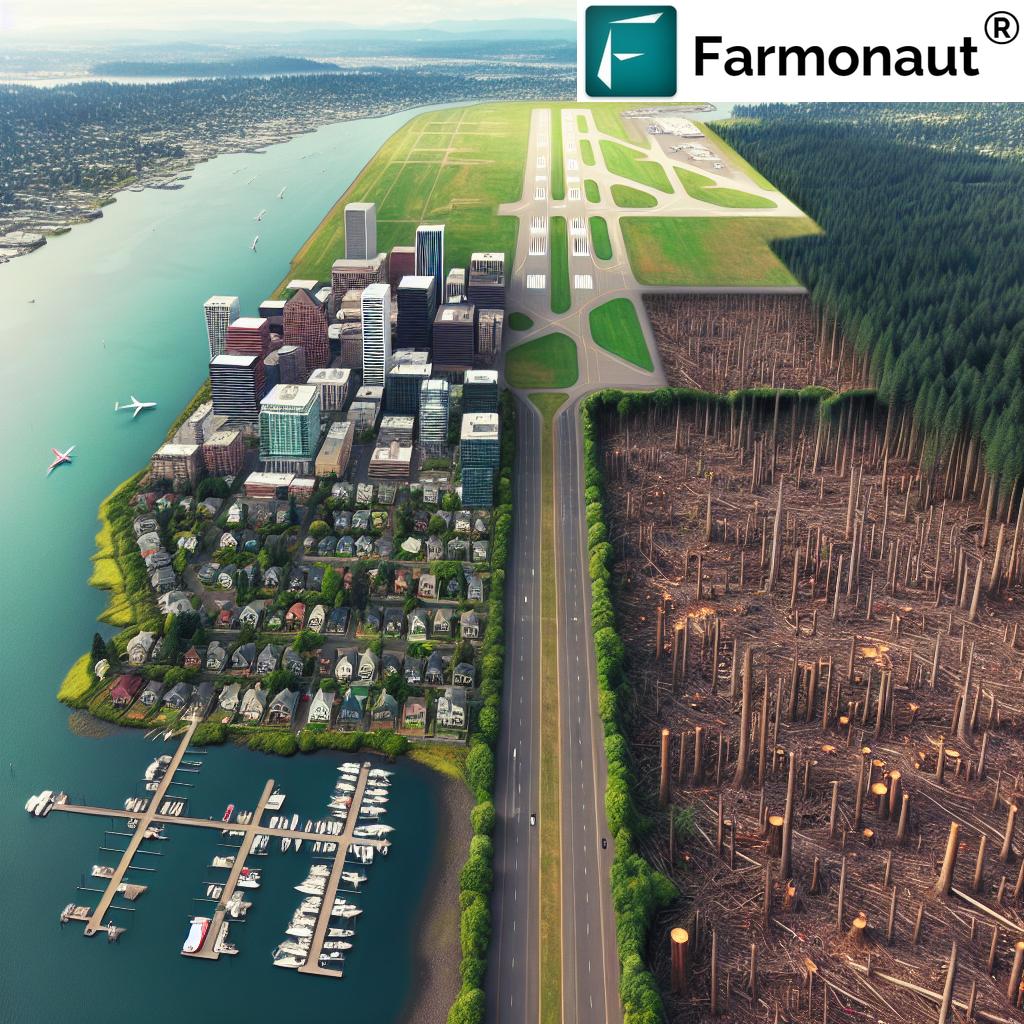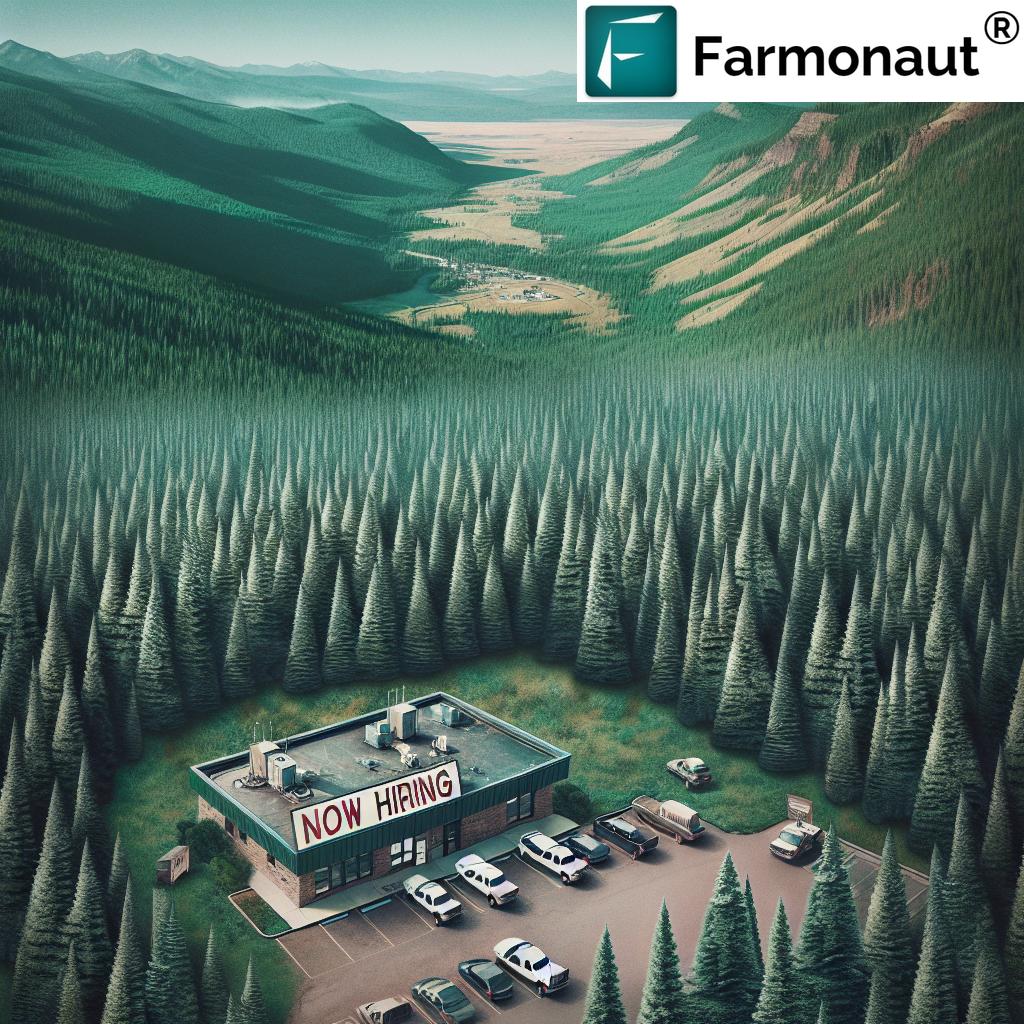Balancing Urban Development and Environmental Protection: Portland’s Tree Removal Controversy
“Portland’s tree removal controversy involved clearing that damaged protected wetlands, violating local ordinances and environmental regulations.”
In the ongoing struggle between urban development and environmental conservation, Portland, Oregon, finds itself at the center of a heated debate. The recent tree removal controversy surrounding the Portland International Jetport has brought to light the complex challenges cities face when attempting to balance aviation safety requirements with the preservation of urban forests and wetlands. As we delve into this issue, we’ll explore the intricate web of tree removal laws, wetland protection regulations, and the broader implications for urban forest management.
The Portland Tree Removal Controversy: A Deep Dive
The controversy began when the Portland International Jetport, owned by the city of Portland, carried out extensive tree removal along Interstate 295 to clear a runway approach as mandated by the Federal Aviation Administration (FAA). However, this action violated the conditions and limits of a tree-removal plan that had been approved by South Portland planning officials in 2019.
The consequences of this violation were significant:
- Hundreds of trees were wrongfully removed
- Protected wetlands were damaged
- Local ordinances were violated
- The project exceeded the scope of the approved plan
This incident has sparked a fierce debate about the balance between urban development, specifically airport expansion and safety, and the protection of valuable environmental resources.

Understanding the Complexities of Urban Forest Management
Urban forest management is a critical aspect of city planning that often goes unnoticed until controversies like the one in Portland arise. It involves the careful balance of various factors:
- Maintaining green spaces for public health and wellbeing
- Preserving biodiversity and wildlife habitats
- Managing stormwater runoff and preventing soil erosion
- Mitigating urban heat island effects
- Ensuring public safety and infrastructure development
In the case of Portland, the need to comply with FAA guidelines for vegetation control near airports added another layer of complexity to this already challenging task.
The Role of Tree Removal Laws and Wetland Protection Regulations
Tree removal laws and wetland protection regulations play a crucial role in preserving urban ecosystems. These legal frameworks are designed to:
- Protect valuable natural resources
- Maintain ecological balance
- Ensure responsible urban development
In Portland’s case, the violation of these laws has led to serious consequences, including potential fines and mandated restoration efforts. This underscores the importance of adhering to approved plans and obtaining proper permits before undertaking large-scale tree removal projects.
FAA Guidelines and Environmental Impact: A Delicate Balance
“FAA guidelines for vegetation control near airports led to extensive clearing, sparking debates on noise barriers and solar farm development.”
The Federal Aviation Administration’s guidelines for vegetation control near airports are designed to ensure safe runway approaches. However, as we’ve seen in Portland, these requirements can sometimes conflict with local environmental protection measures. This raises important questions about how cities can balance aviation safety with environmental preservation.
Some potential strategies for achieving this balance include:
- Implementing more precise tree-trimming techniques
- Using alternative noise barrier solutions
- Exploring eco-friendly land use options for cleared areas
The Impact on Residential Neighborhoods
The tree removal controversy in Portland has had a significant impact on nearby residential neighborhoods. The clearing of massive evergreens along Interstate 295 removed a crucial visual and sound barrier, exposing residents to increased noise pollution and reducing their privacy.
This situation highlights the need for:
- Comprehensive community engagement in urban planning decisions
- Consideration of alternative noise barrier solutions
- Balancing infrastructure needs with quality of life for residents
As cities continue to grow and develop, finding ways to maintain green spaces and natural buffers in residential areas will become increasingly important.
The Potential for Solar Farm Development
In an interesting twist to the Portland tree removal controversy, a proposal for a solar farm development on the cleared land has emerged. This proposal, submitted by New Leaf Energy of Lowell, Massachusetts, presents both opportunities and challenges:
- Potential for renewable energy generation
- Utilization of cleared land for sustainable purposes
- Concerns about further environmental impact
- Resistance from local residents
This development underscores the complex interplay between environmental protection, urban development, and renewable energy initiatives in modern city planning.

The Role of Technology in Urban Forest Management
As we grapple with these complex issues, it’s worth noting the potential role that advanced technology can play in urban forest management. Tools like satellite imagery and AI-driven analysis can provide valuable insights for city planners and environmental managers.
For instance, Farmonaut’s crop plantation and forest advisory services utilize satellite technology and AI to monitor vegetation health and provide valuable data for land management decisions. While primarily focused on agricultural applications, these technologies could potentially be adapted for urban forest management, helping cities like Portland make more informed decisions about tree removal and preservation.
Lessons Learned and Moving Forward
The Portland tree removal controversy offers several important lessons for cities grappling with similar challenges:
- The importance of adhering to approved plans and obtaining proper permits
- The need for clear communication and collaboration between neighboring cities
- The value of comprehensive environmental impact assessments
- The importance of balancing multiple stakeholder interests in urban planning
Moving forward, cities like Portland will need to develop more robust strategies for managing urban forests while meeting infrastructure needs and regulatory requirements.
Comparative Analysis of Urban Tree Management Strategies
| City/Region | Tree Removal Policy | Wetland Protection Measures | FAA Compliance Strategy | Environmental Impact Score (1-10) | Community Engagement Level | Alternative Solutions Implemented |
|---|---|---|---|---|---|---|
| Portland, OR | Strict, requires approval | Strong, but violated in this case | Aggressive clearing | 3 | Low | Solar farm proposal |
| Seattle, WA | Very strict, tree point system | Comprehensive protection | Gradual trimming | 8 | High | Green walls, precision trimming |
| Austin, TX | Moderate, heritage tree protection | Strong riparian zone rules | Selective removal | 7 | Medium | Eco-friendly noise barriers |
| Minneapolis, MN | Flexible, focuses on canopy goals | Wetland banking system | Proactive management | 6 | Medium | Urban forestry master plan |
| Boston, MA | Strict, urban wild preservation | Coastal wetland emphasis | Minimal intervention | 9 | High | Green infrastructure integration |
This comparative analysis highlights the diverse approaches cities are taking to balance urban development with environmental protection. While Portland’s recent controversy resulted in a low environmental impact score, other cities like Seattle and Boston demonstrate more successful strategies that could serve as models for improvement.
The Role of Carbon Footprinting in Urban Development
As cities strive to become more environmentally conscious, tools like carbon footprinting are becoming increasingly important. While typically associated with agricultural practices, these tools can also be applied to urban development projects. By measuring the carbon impact of tree removal and other urban changes, cities can make more informed decisions about their development strategies.
The Importance of Community Engagement
One of the key lessons from Portland’s tree removal controversy is the critical importance of community engagement in urban planning decisions. When residents are involved in the decision-making process, it can lead to:
- Better understanding of local environmental concerns
- More creative solutions to complex problems
- Greater public support for necessary development projects
- Improved trust between city officials and residents
Moving forward, cities should prioritize transparent communication and meaningful community involvement in urban forest management decisions.
Innovative Solutions for Urban Forest Management
As we look to the future, innovative solutions will be crucial for effective urban forest management. Some promising approaches include:
- Using drone technology for precise tree assessment and trimming
- Implementing smart sensors for real-time monitoring of urban forests
- Developing green infrastructure that integrates trees with built environments
- Exploring vertical forests and rooftop gardens in dense urban areas
These solutions can help cities like Portland better manage their urban forests while meeting other development needs.
The Potential of Traceability in Urban Development
While typically associated with agricultural supply chains, traceability solutions could potentially be adapted for urban development projects. By implementing blockchain-based traceability systems, cities could create transparent records of tree removal, replanting efforts, and other environmental impacts. This could help build trust with residents and ensure accountability in urban forest management.
FAQs
- Q: Why did Portland International Jetport remove trees?
A: The jetport removed trees to clear a runway approach as required by Federal Aviation Administration guidelines. - Q: What laws were violated in the Portland tree removal controversy?
A: The jetport violated local tree removal laws, wetland protection regulations, and the conditions of an approved 2019 tree-removal plan. - Q: What are the potential consequences for the jetport?
A: The jetport could face fines, be required to replace trees, and be forced to restore damaged wetlands. - Q: How has the tree removal affected nearby residents?
A: The removal of trees has eliminated a visual and sound barrier between Interstate 295 and nearby residential neighborhoods, increasing noise pollution and reducing privacy. - Q: What alternative proposals have been suggested for the cleared land?
A: A proposal for a solar farm development on the cleared land has been submitted, though it’s still under review.
Conclusion
The Portland tree removal controversy serves as a stark reminder of the complex challenges cities face in balancing urban development with environmental protection. As we’ve explored, effective urban forest management requires a delicate balance of regulatory compliance, environmental stewardship, and community engagement.
Moving forward, cities must prioritize comprehensive planning, transparent communication, and innovative solutions to navigate these challenges successfully. By learning from incidents like the one in Portland and embracing new technologies and approaches, we can work towards a future where urban development and environmental protection coexist harmoniously.
As we continue to grapple with these issues, it’s clear that the path forward will require collaboration, creativity, and a steadfast commitment to preserving our urban forests for future generations.
Earn With Farmonaut: Affiliate Program
Earn 20% recurring commission with Farmonaut’s affiliate program by sharing your promo code and helping farmers save 10%. Onboard 10 Elite farmers monthly to earn a minimum of $148,000 annually—start now and grow your income!
















